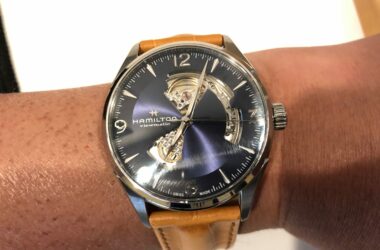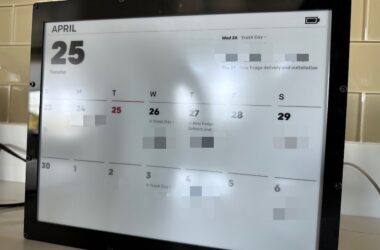Smartphone cameras are getting very good, very fast.
Phones are, of course, nowadays how the vast majority of pictures are taken. I had simple point-and-shoot digital cameras before as well, but eventually upgraded my photography kit when we had our first child, on idea that I’d want baby pictures at a higher quality bar than what my phone could capture. On following the advice that the best camera “is the one that you have with you”, I went for one of the newer formats at the time, Micro Four Thirds (MFT).
The MFT standard was conceived to fill in the gap between smaller point-and-shoots and much bigger, heavier, and more expensive full-frame and crop-sensor DSLRs. Image sensor size has direct and often substantial impact on image quality1, and the format specified a sensor that was exactly half in width (18mm) and height (12mm)—hence a fourth of the size— to that of a full-frame camera (36mm × 24mm). Even when the format was new, the format was designed to be a best-of-both-worlds compromise: pretty good pictures with a growing selection of lenses, while retaining travel portability and ease-of-use.
So on suggestion of a couple of good online reviews, I carried a Panasonic GF1 for a number of years, then eventually well-regarded Olympus OM-D E-M5 Mark II.
At the same time, smartphones just got way better at taking pictures. Manufacturers saw camera quality as a differentiating feature that could still drive biannual upgrades, and invested in both the hardware and software of phone photography. On the former, the physical limitations of the small and thin phone form factor were a bump in the road, as phones got comfortable with literal bumps housing the camera module, which itself can house several lenses of varying focal lengths. On the latter, engineers realized that they have a lot more information available to them for any given photo, both via the phone’s multiple lenses2 and via taking more shots before and after the user-invoked snapshot. That additional data is enough for machine learning algorithms, instantaneously, to simulate the effects like depth of field and capturing photos in low-light.
All of that has meant that the quality edge that MFT cameras rapidly shrunk. Smartphones were already much more convenient in photos sharing and organization, and while the aforementioned effects are always doing to be simulated and imperfect, they’re often good enough, even for physical prints3. MFT cameras were never bulky, but their primary competition were designed to fit in pockets4.
On a recent family vacation, I figured that either I’d just use my smartphone like a normal traveler, or invest in something that would again realize the original vision of carrying a dedicated camera—to take and keep pictures of the kids before they grew up to be too cool for family photos. To that end, I ended up upgrading the entire kit, jumping up 2 sensor sizes to a full-frame mirrorless camera, the Sony A7III.
The camera body isn’t much bigger than other mirrorless cameras and substantially smaller than traditional DSLRs, but there is a real difference in weight and heft. Lenses are also, on the whole, much bulkier and more expensive. It’s much harder to be discreet with the entire package; compared to phones and even my previous cameras, subjects tend to be very aware that they’re having photos taken. Positively though, pictures from the A7III are noticeably sharper with more detail. Combined with how fast it is to capture light as well, and I’m finding that I get to keep a lot more photos from my new setup, which itself makes it more likely to take it out on the off-chance that I can add to the photo library.
Granted, I’m using the A7III as a specialized tool for 3:2 photography; smartphones are still more convenient in making use of other formats (square, panoramic) and videos are much easier to capture and even edit on phones. It’s hard to predict if phones, on their current trajectory, would eventually match this level of image quality given the limitations of the physical form factor. I wouldn’t be surprised if standalone cameras retain a niche but important role in photography, but I also would not want to underestimate how much is possible with annual hardware revisions and clever software.
One of the primary reasons why smartphone cameras are physically constrained in optics, irregardless of megapixel count.↩
Some flagship phone models add distance sensors on top of everything else.↩
Anecdotally, print shops seem be now calibrating against smartphone photography, which makes complete sense given its abundance.↩
Emphasis in the past tense, as everyone went the phablet route and concluded that sitting down with a phone in your pocket is a luxury.↩


